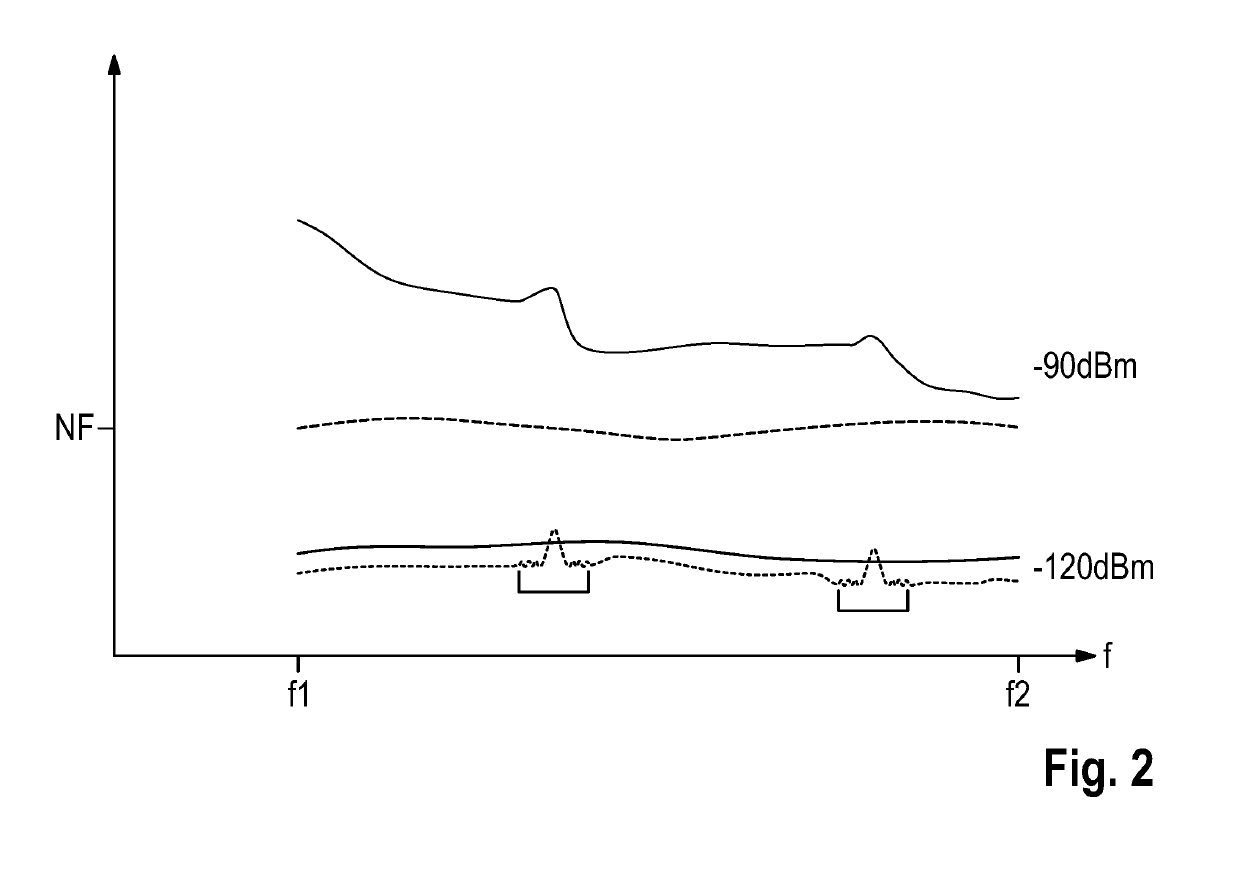Method for searching a spur in a signal received and device for searching a spur in a signal received
a technology of a spur and a signal received, which is applied in the direction of electrical equipment, transmission monitoring, and very fast steps, can solve the problems of high resolution bandwidth and different errors in the detection of spurs, and achieve the effect of efficient and fast manner
- Summary
- Abstract
- Description
- Claims
- Application Information
AI Technical Summary
Benefits of technology
Problems solved by technology
Method used
Image
Examples
Embodiment Construction
[0029]In FIG. 1, a device 10 is shown having a radio frequency input 12 for receiving a signal to be analyzed wherein the device 10 is configured to search for spurs in the signal received via the input 12.
[0030]The device 10 comprises a mixer 14 which is connected to the input 12 as well as to a tunable local oscillator 16 being a voltage controlled oscillator, for instance.
[0031]Further, an input attenuator 18 is shown which is positioned between the input 12 and the mixer 14 such that the radio frequency signal received via the input 12 is attenuated before it is processed, in particular converted by the mixer 14. The input attenuator 18 can also be called radio frequency attenuator.
[0032]The output of the mixer 14 is connected with a preamplifier 20 that is used to amplify the converted signal before it is received by a resolution bandwidth filter 22 (RBW filter). The resolution bandwidth filter 22 is also called bandpass filter or intermediate frequency filter (IF filter).
[0033...
PUM
 Login to View More
Login to View More Abstract
Description
Claims
Application Information
 Login to View More
Login to View More - R&D
- Intellectual Property
- Life Sciences
- Materials
- Tech Scout
- Unparalleled Data Quality
- Higher Quality Content
- 60% Fewer Hallucinations
Browse by: Latest US Patents, China's latest patents, Technical Efficacy Thesaurus, Application Domain, Technology Topic, Popular Technical Reports.
© 2025 PatSnap. All rights reserved.Legal|Privacy policy|Modern Slavery Act Transparency Statement|Sitemap|About US| Contact US: help@patsnap.com


